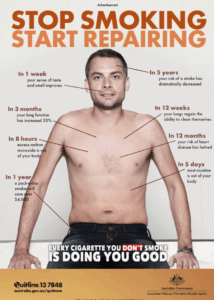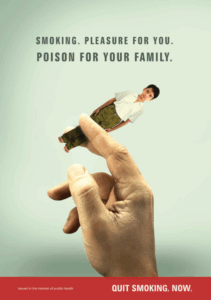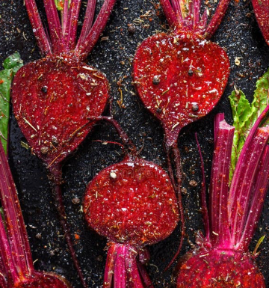One time, a patient brought me a Western Bacon Cheeseburger. He walked into the operatory, set it on the counter, and simply stated, “I brought this for you.” I knew I wasn’t going to eat it, but it was thoughtful, so I graciously accepted it. I didn’t want to eat it – not just for health reasons, but also because food and dental offices don’t mix. Think of the aerosols!
I did think the move was a bit brazen. I mean, this is a healthcare setting. Am I not worthy of a little pretense – of him trying to impress me? This guy didn’t even lie about his flossing! Usually, I have my converts or, I’m met with – “I can change, believe me!”
Retelling this short experience got me thinking about how we encourage people to change – whether in a dental chair or through public health messaging.
When I meet someone who doesn’t seem open to listening (which does not mean they aren’t perfectly lovely people who bring you hamburgers) I think about messaging. What I say, how I say it, and how it fits into the bigger picture. A lot of thought goes into public health messaging, and I can say from experience: a debate over a single word can hold up an entire campaign.
Messaging typically falls into two categories: positive or negative. Here are two examples aimed at encouraging smokers to quit – one highlighting the positive health benefits, and the other focusing on the negative harm to innocent children.


Behavioral decision researchers study the impact of message framing on outcomes and have found that negative campaigns increase anxiety without actually changing behavior. These days, we are bombarded with negative messages: the food is toxic, the water is toxic, the toothpaste is toxic – and on and on. But emotional stress raises cortisol levels, which can be harmful over time – especially for expectant mothers. Some studies have even linked high maternal cortisol levels to an increased risk of preterm birth.
While pregnant I remember being told to avoid deli meat, soft cheeses, sushi, and to limit caffeine. Other than being advised to take a prenatal vitamin, I don’t recall my doctor or her staff giving me any specific advice on what I should be eating. During my second pregnancy my blood glucose was consistently high, though I was not diabetic, and at every checkup my doctor told me to watch my weight gain. I felt horrible after those appointments, especially because I didn’t think I was doing anything differently compared to my first pregnancy and I didn’t understand why I kept gaining weight.
Healing Through Balance
In Traditional Chinese Medicine (TCM) illness is seen as an imbalance in the body. To heal, the body must be brought back into balance.
We try to do this instinctively – like when we’re sick and someone makes us soup. Soup does not cure the common cold; the body heals us. But soup nourishes us. It encourages us to eat because it’s rich and flavorful and many people lose their appetite when they are sick. Soup has nutrients and protein that can help us heal. And soup is usually served warm, which acts to balance the “coldness” in the body when we are sick.
Ginger ale is another common remedy – and ginger as a warming spice, helps bring the body back into balance and supports immune function.
Like Supports Like
The reason I’m sharing all of this is to raise awareness about the properties of food. The color, shape, and even flavor of a food can offer clues as to what it supports in the body.
Here are a few examples:
Walnuts >> Brain

Look at a walnut – what does it remind you of? It looks like a brain! Walnuts are rich in antioxidants like vitamin E, omega-3 fatty acids, and choline, all of which reduce oxidative stress, support brain health, and may even reduce the risk or progression of Alzheimer’s disease.
Celery >> Bones

Celery looks like bones!
It’s high in vitamin K, a fat-soluble vitamin that helps remove “old bone” to make way for “new bone” and without vitamin K our bones cannot absorb calcium effectively. Celery is also a great alkalizing agent, which means that it can help to keep the pH of our body less acidic.
Beets >> Heart

Beets resemble the heart – and when you slice them, the juice even looks like blood. Beets are high in nitric oxide which is a vasodilator that helps keep blood vessels open and supports healthy blood pressure. Nitric oxide also helps the body absorb more oxygen from the air we breathe.
Figs >> Male Reproductive Health
Figs look like testicles and the seeds resemble sperm. Figs are known to support male reproductive health and may even boost fertility.

There are many other examples to explore, and I encourage you to do so … because it’s fun!
If you’re expecting, challenge yourself to identify foods that can support pregnancy. (Hint: start with avocados, onions, carrots, and mushrooms). If you have kids, get them involved! Share these observations while grocery shopping or let them guess the connections on their own.
Food is just one piece of the puzzle in creating balance. Emotional health, a nurturing environment, and physical activity are major contributors as well. And remember – balance in the body isn’t just about avoiding too many cheeseburgers. It’s about embracing the good.

